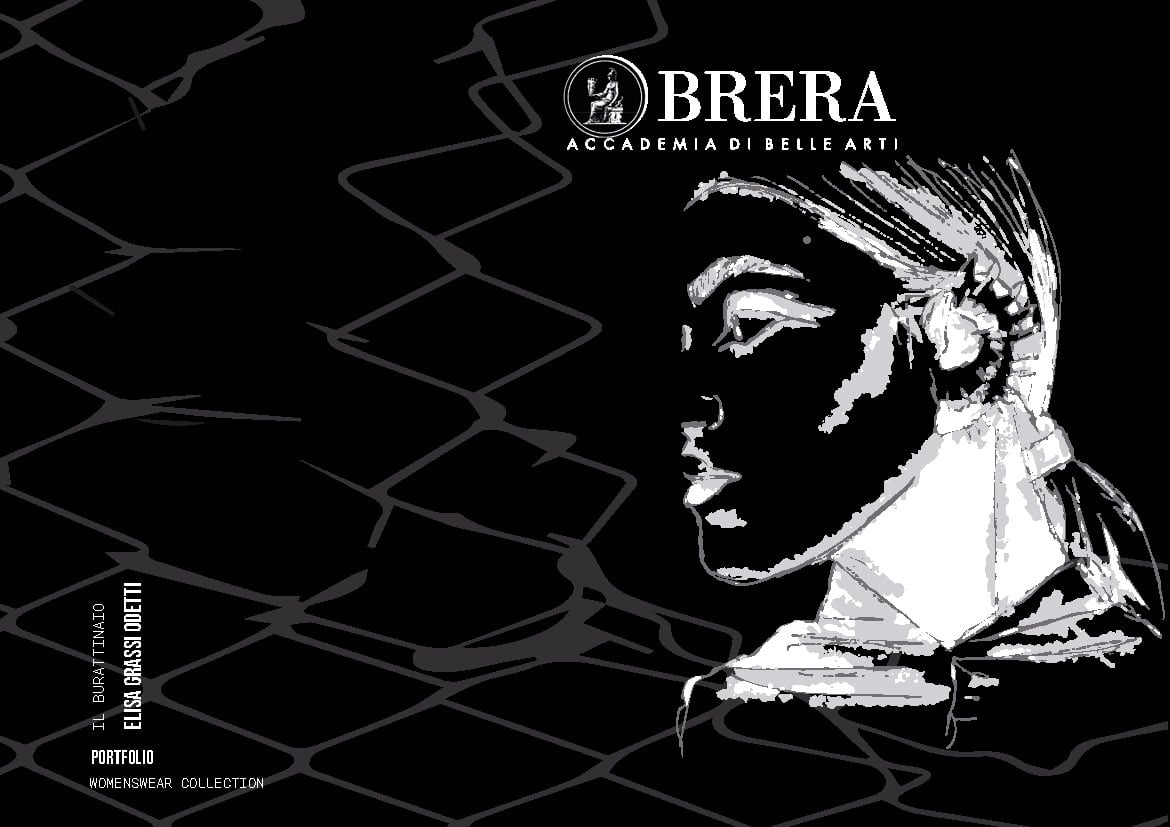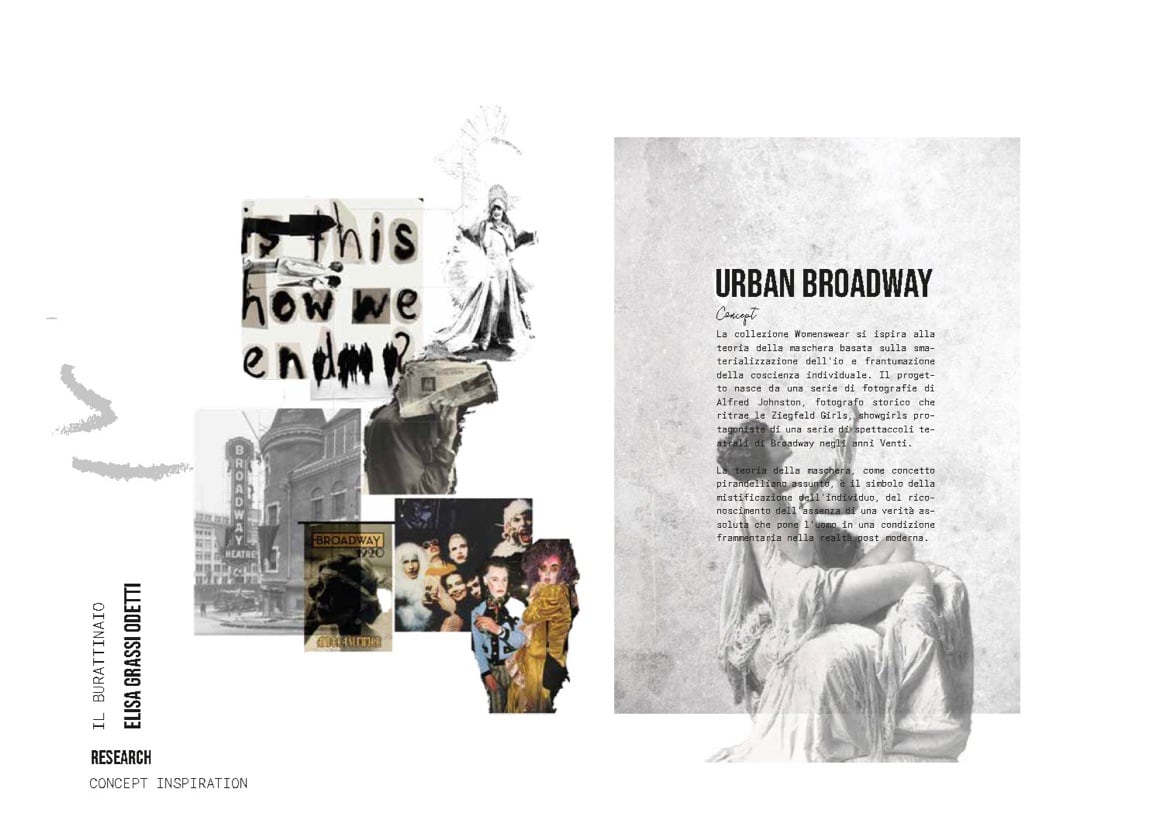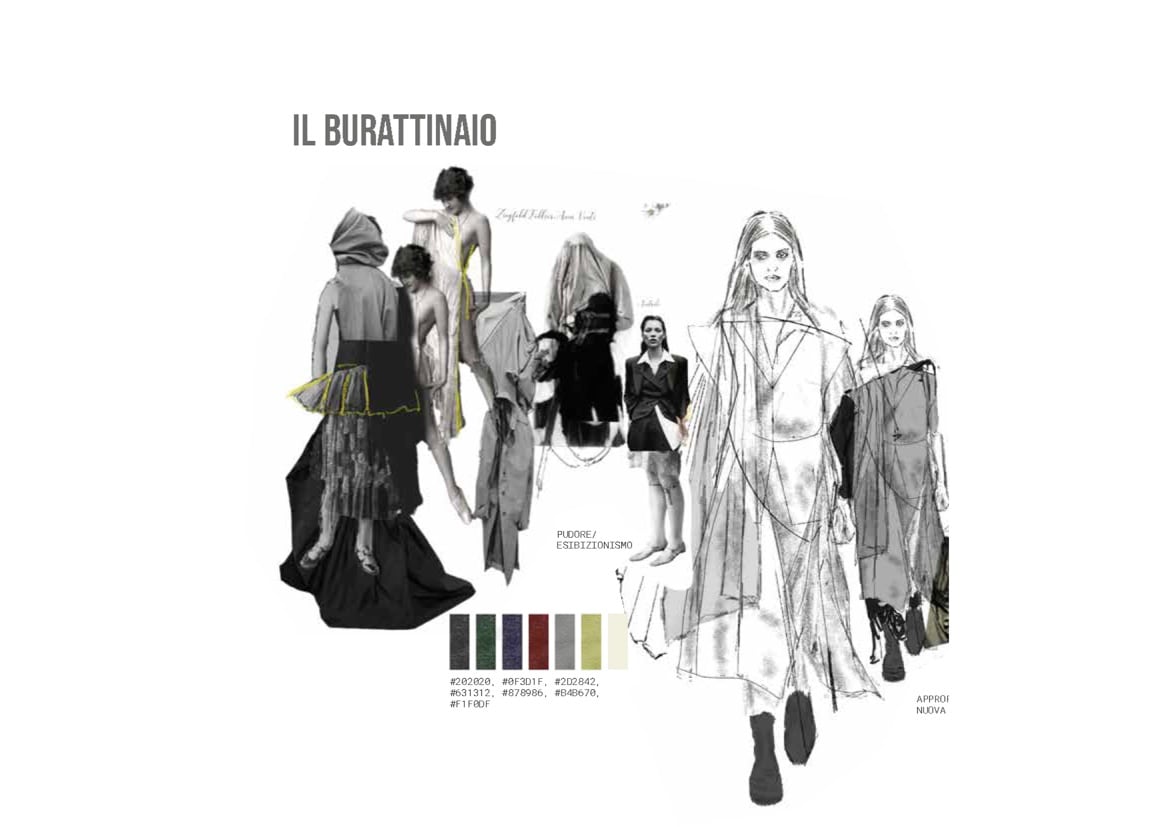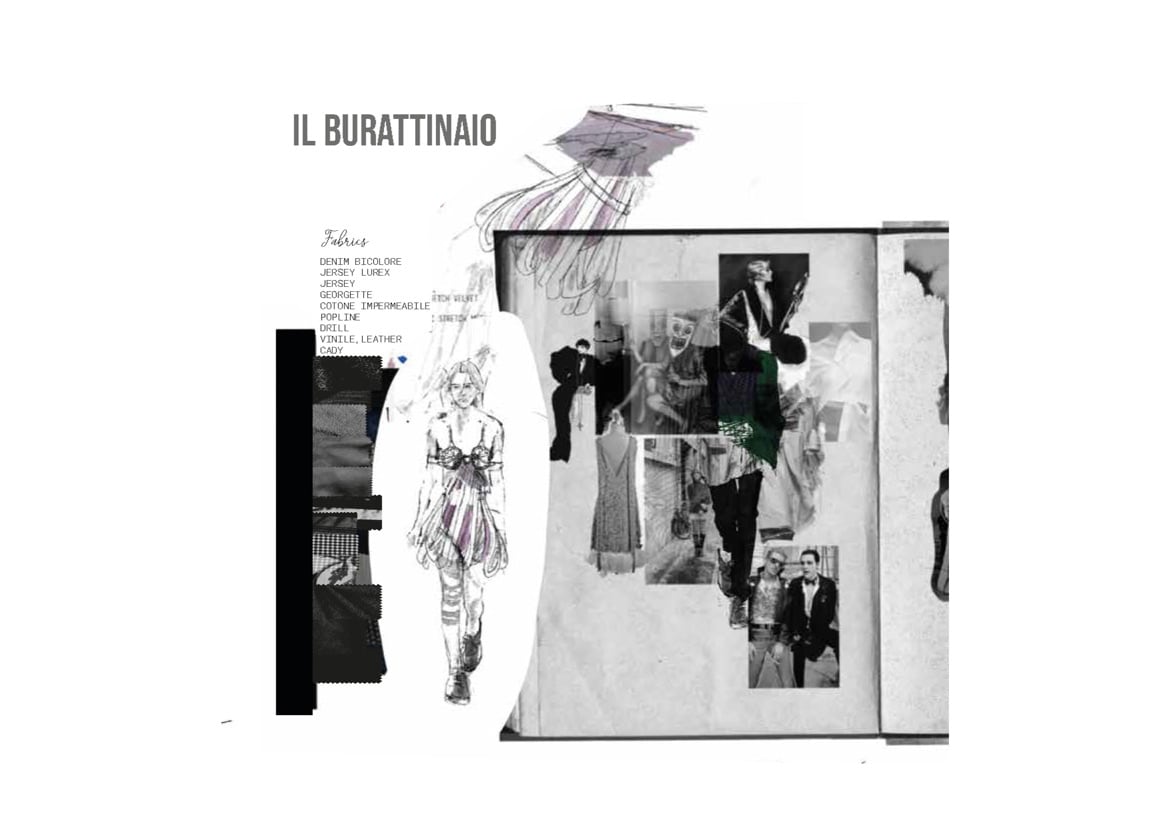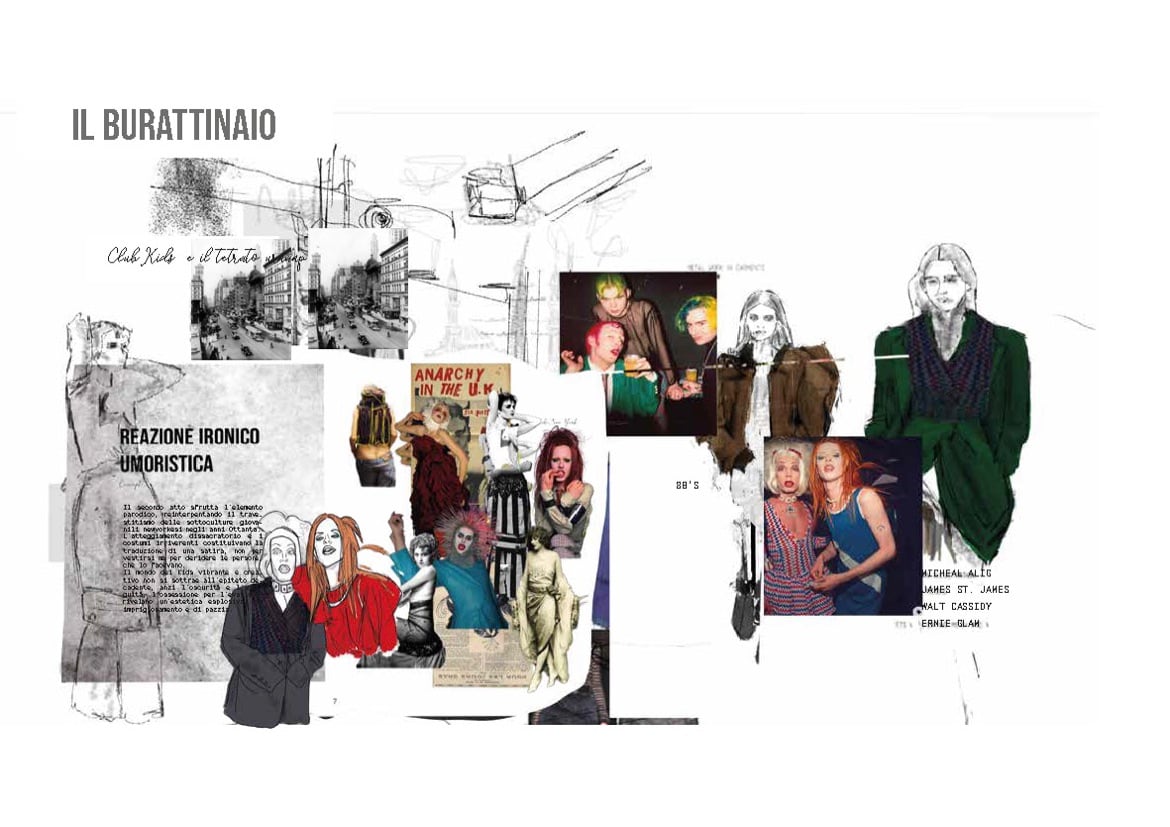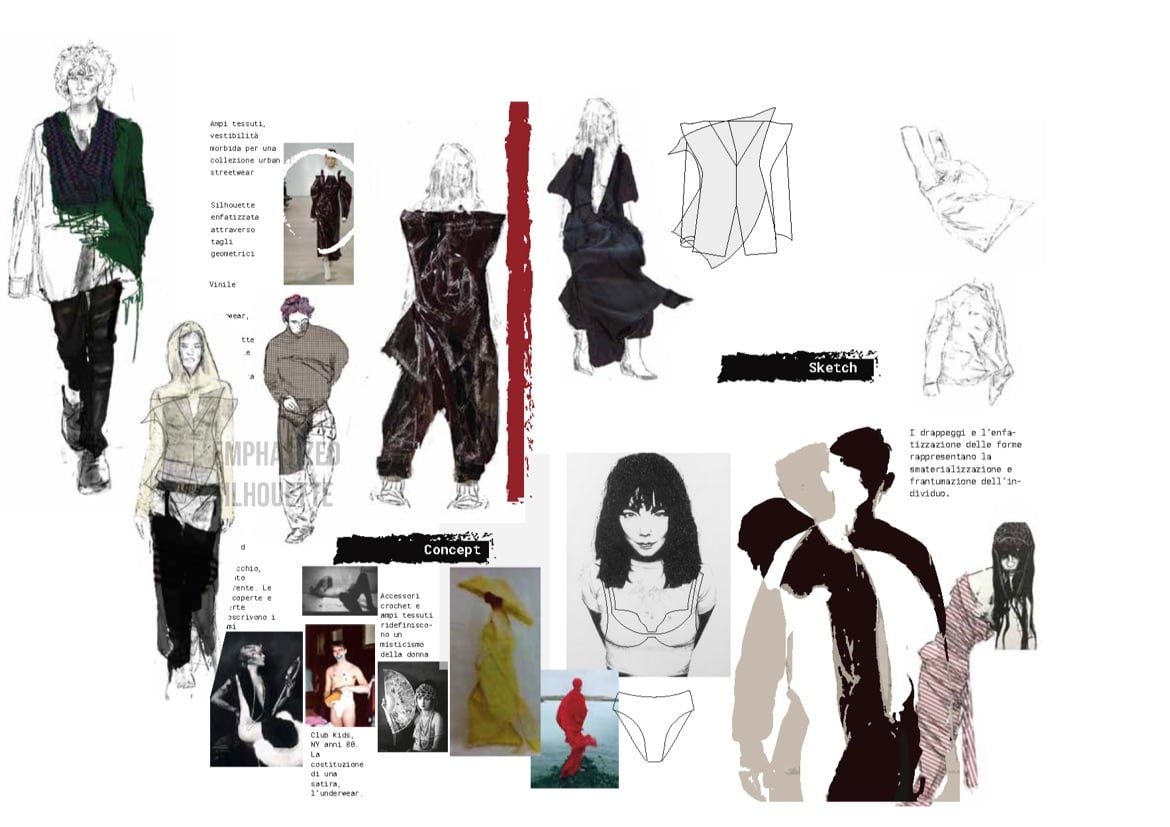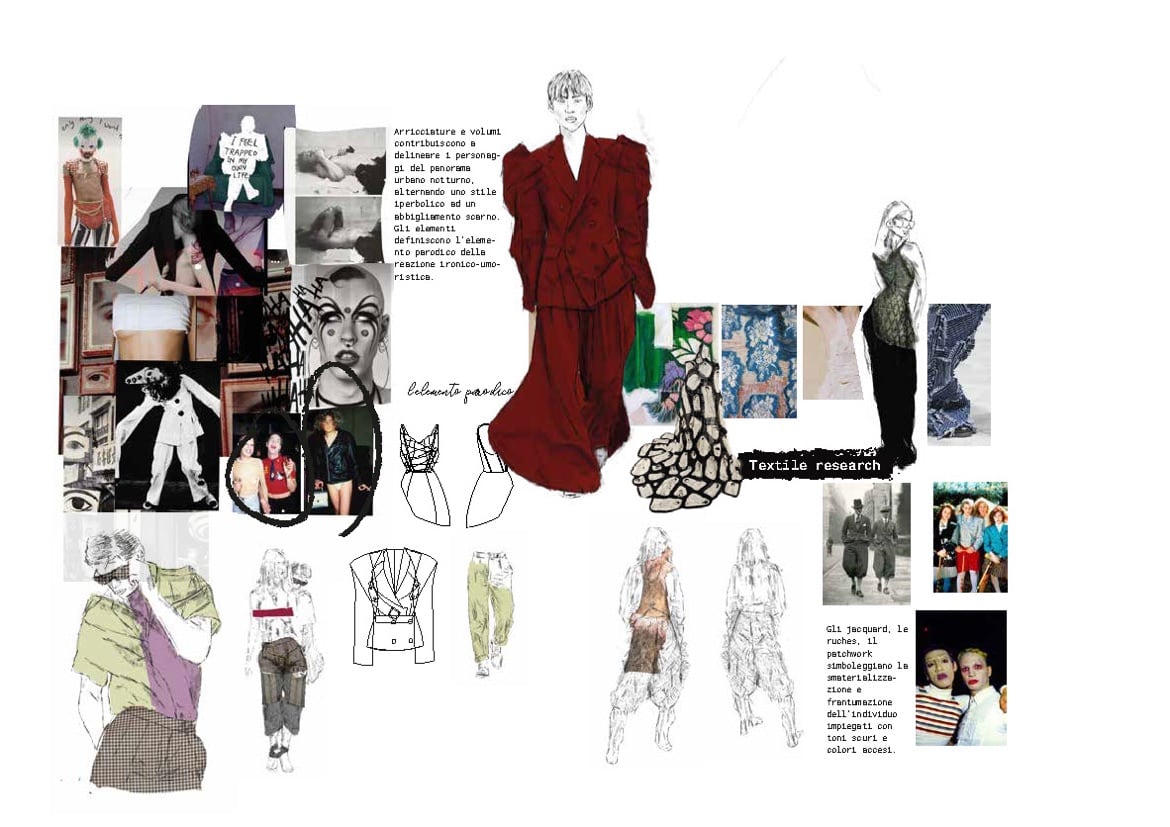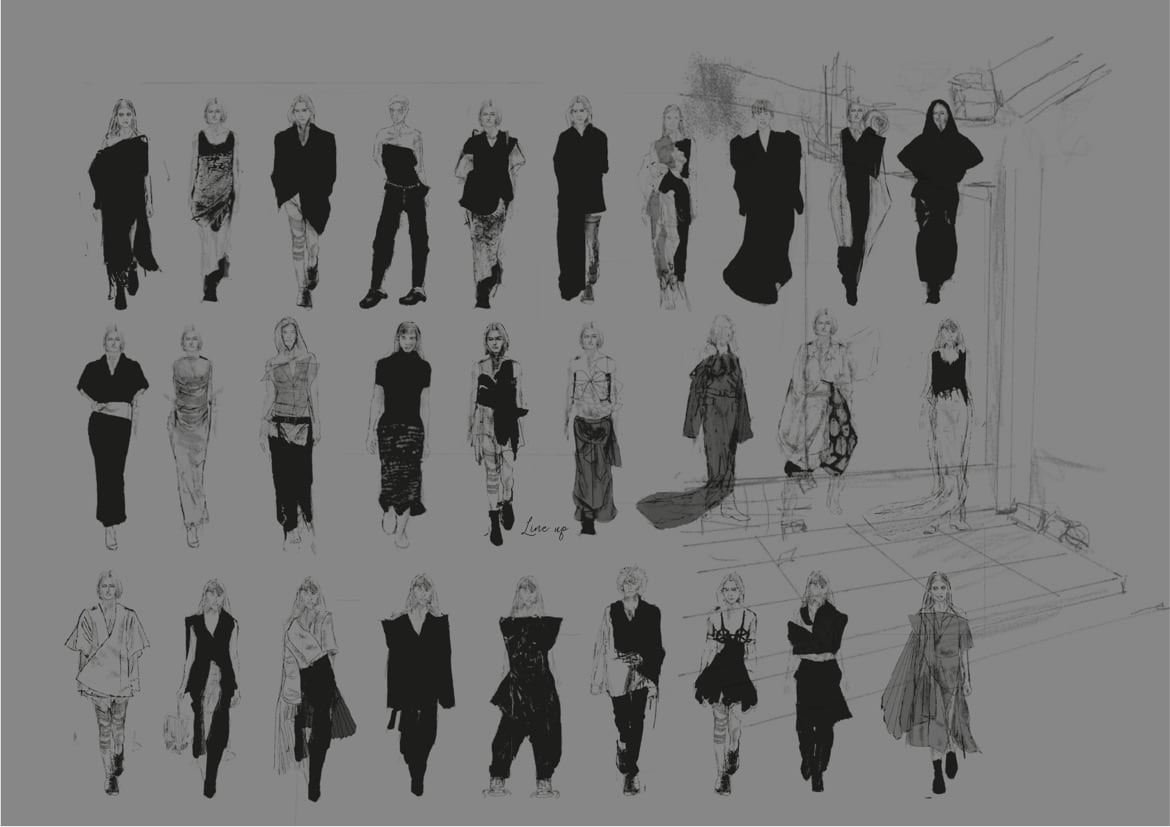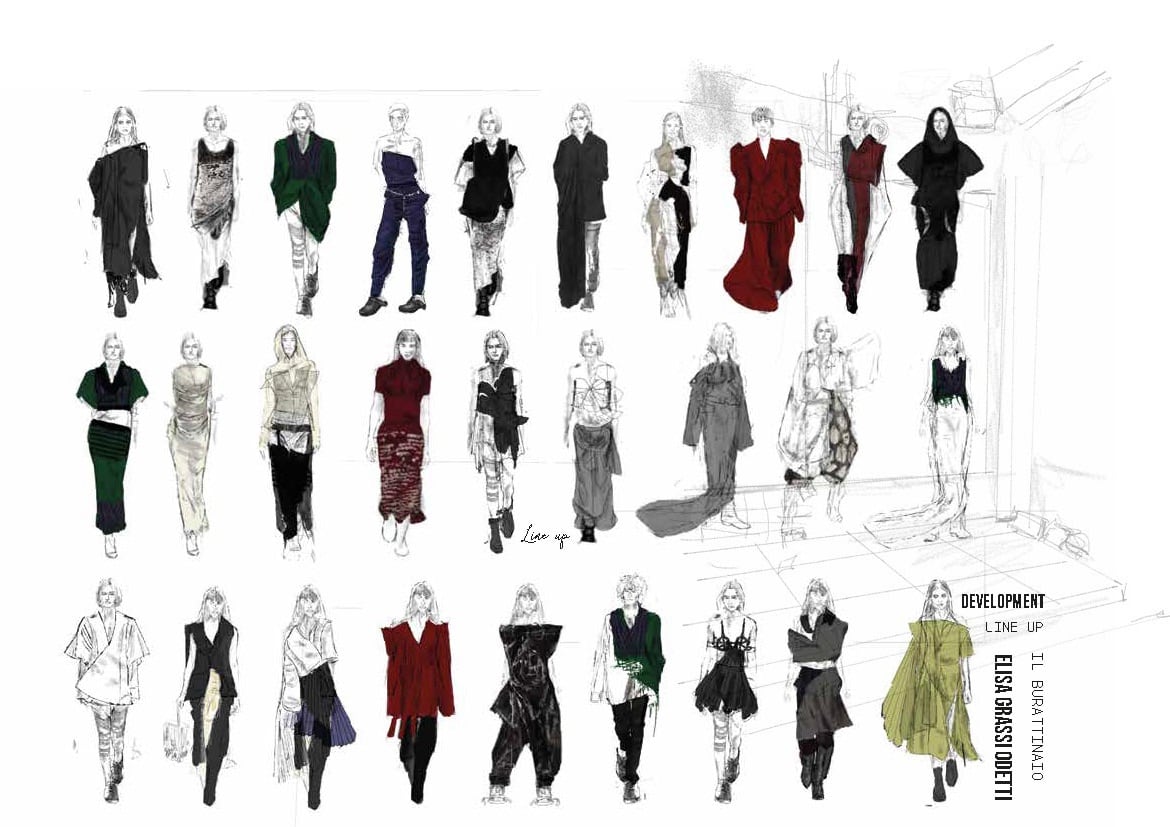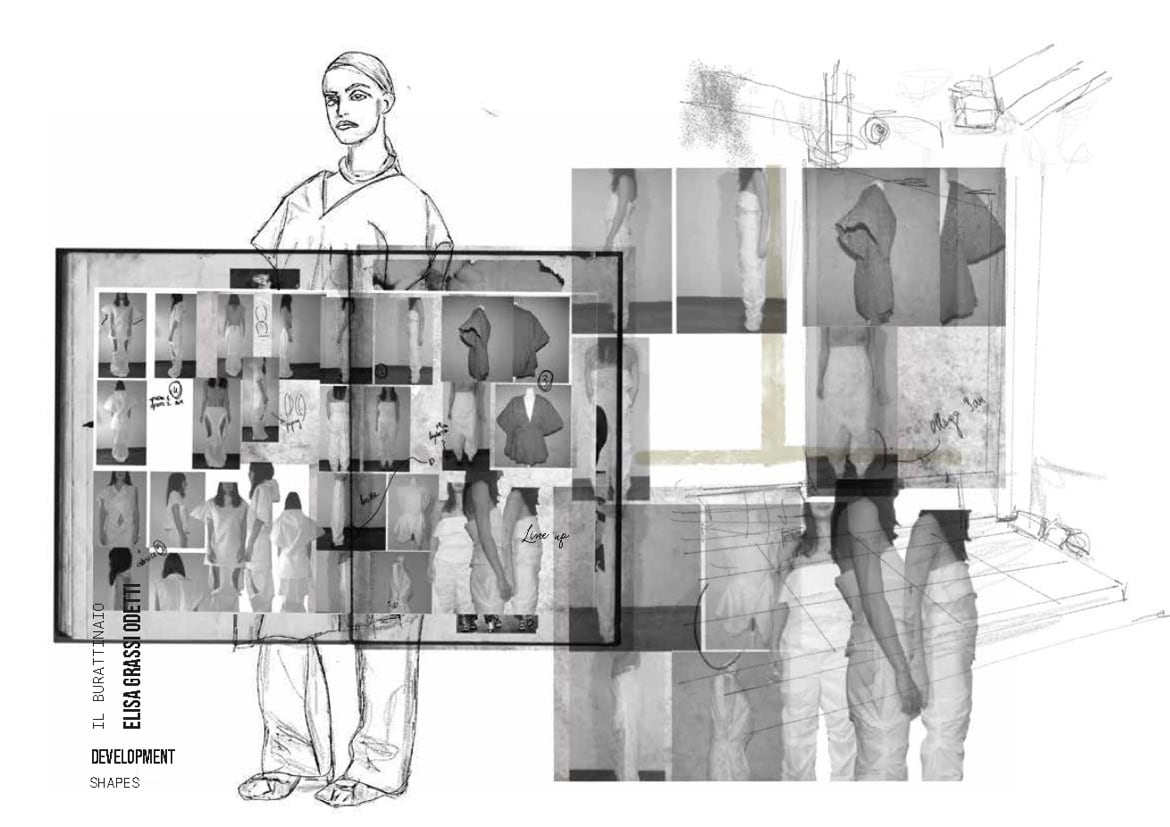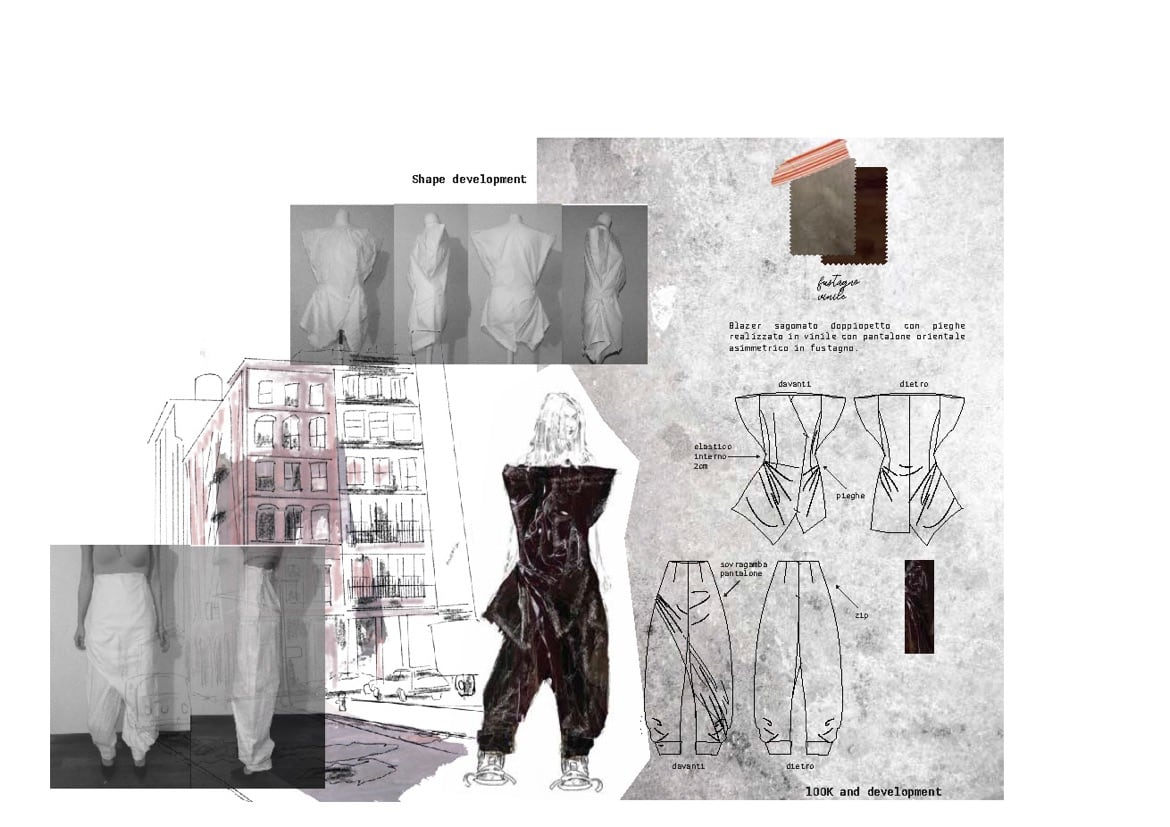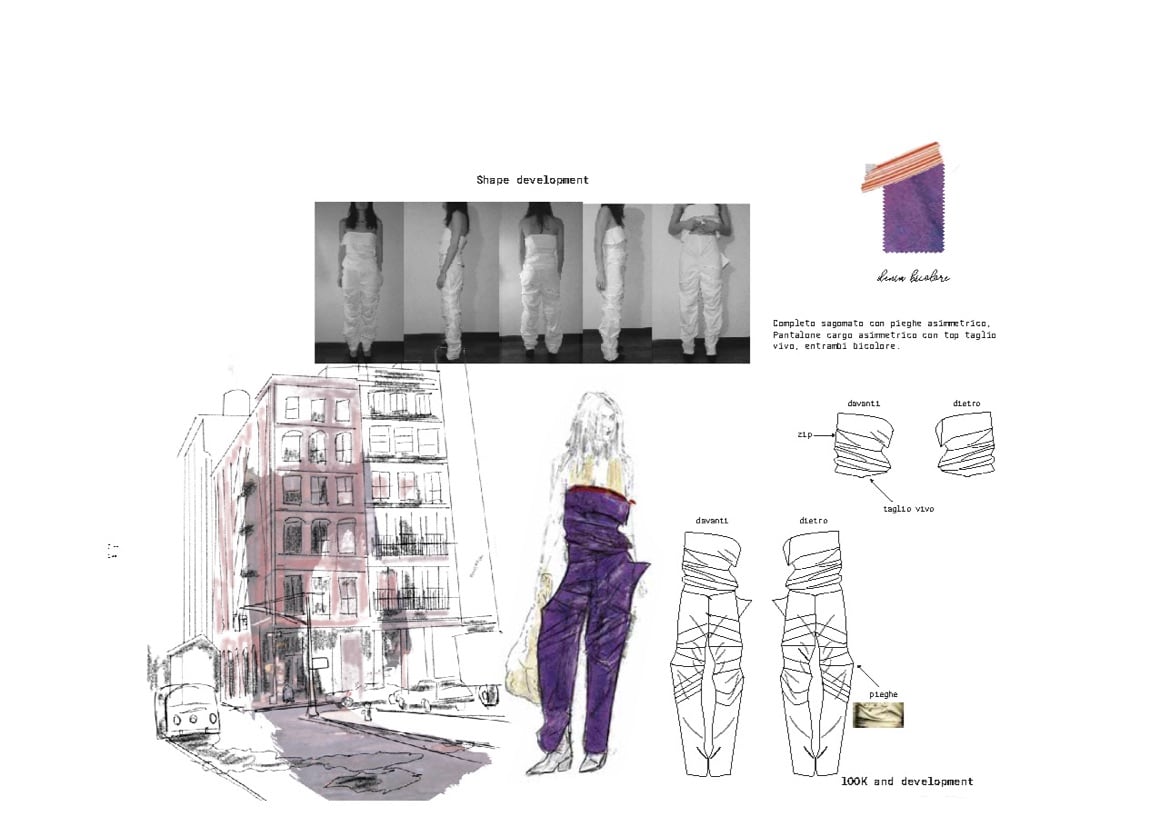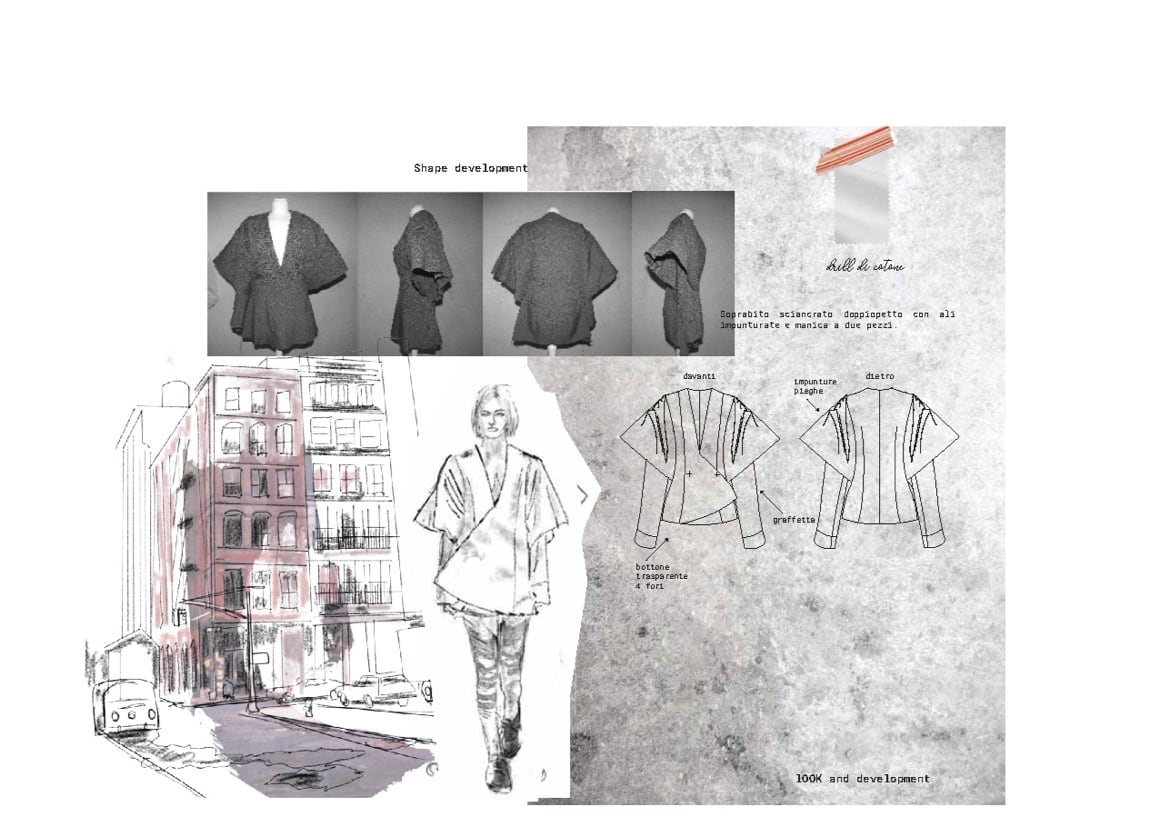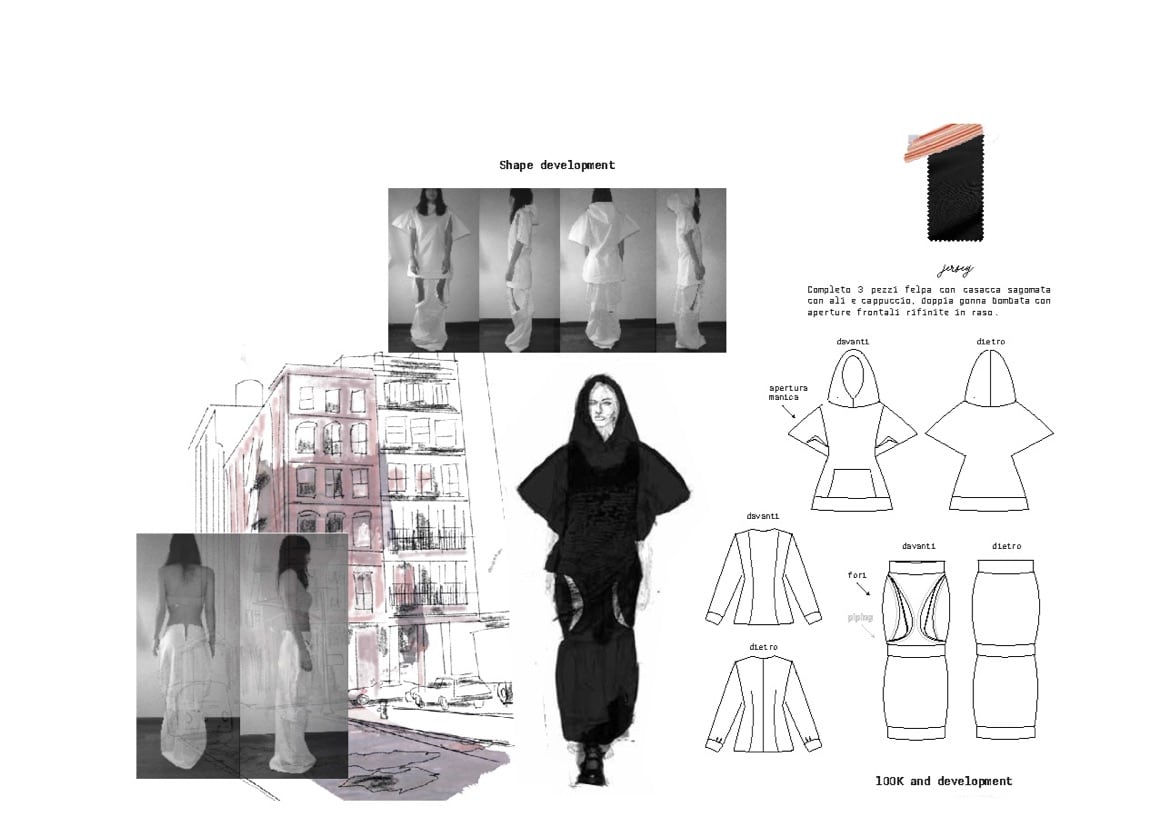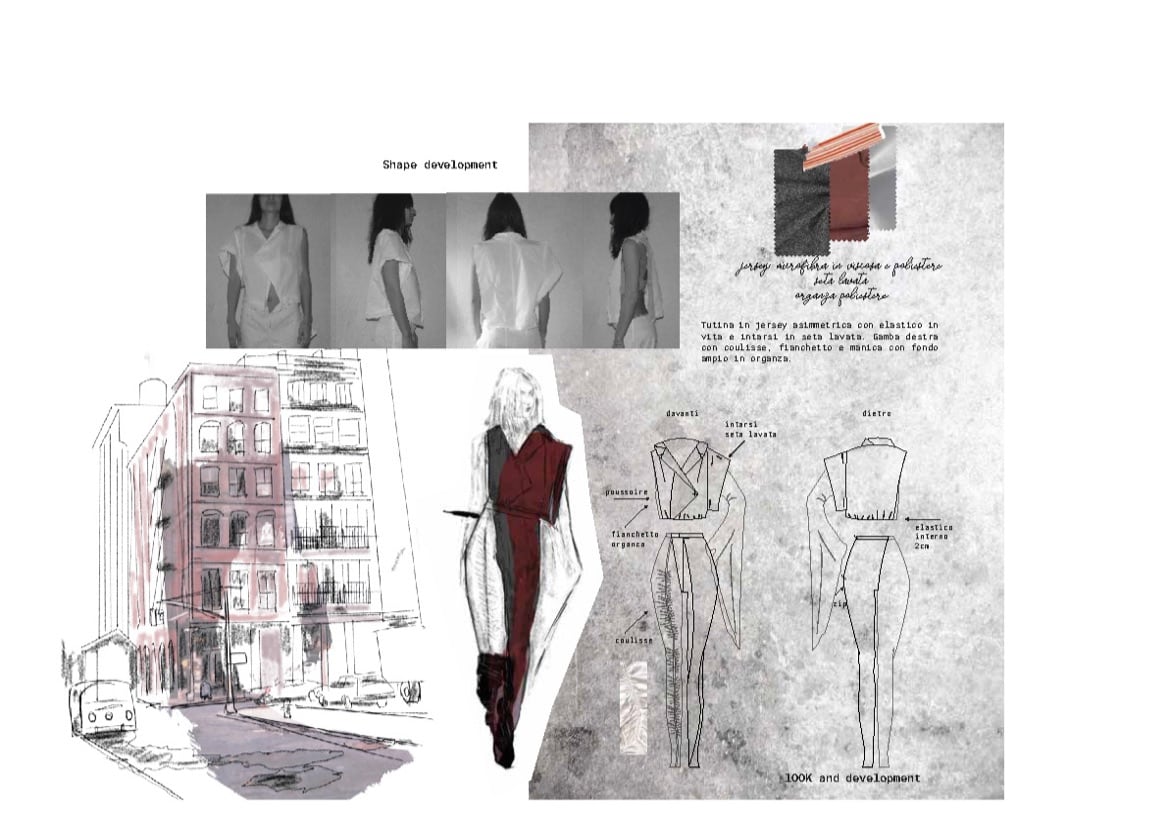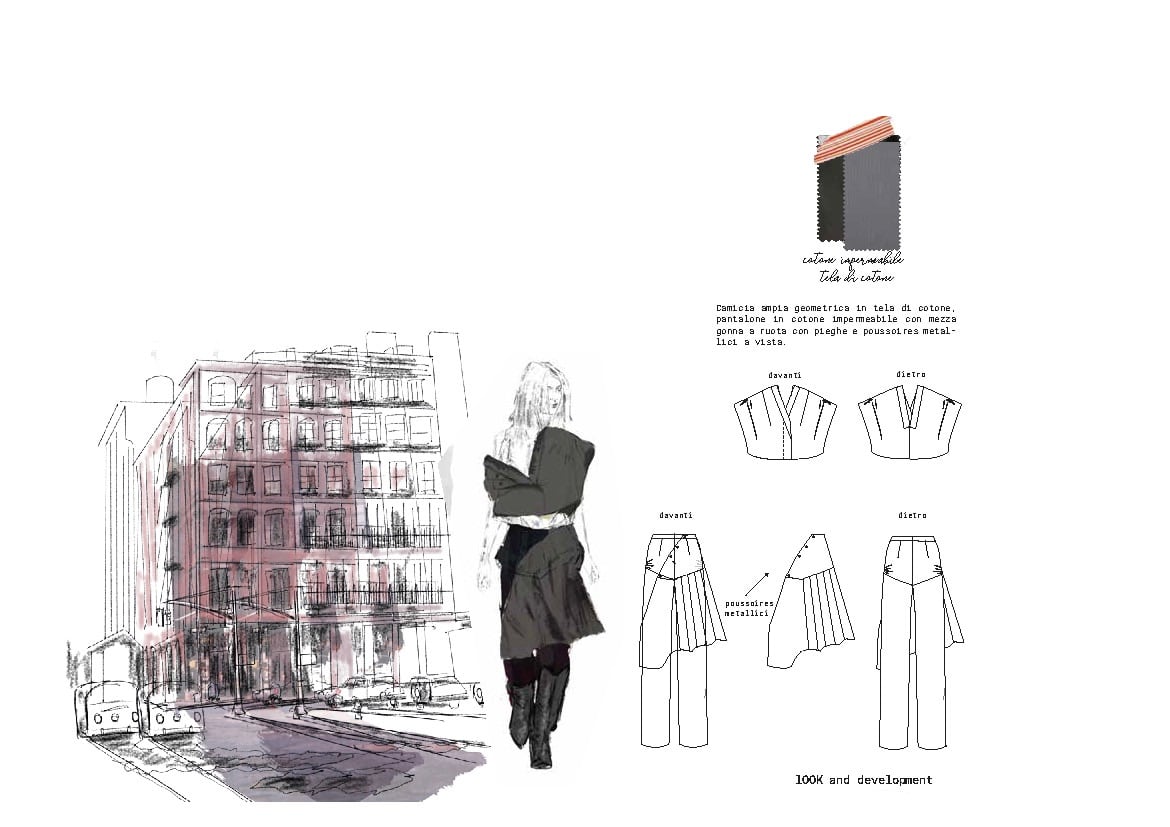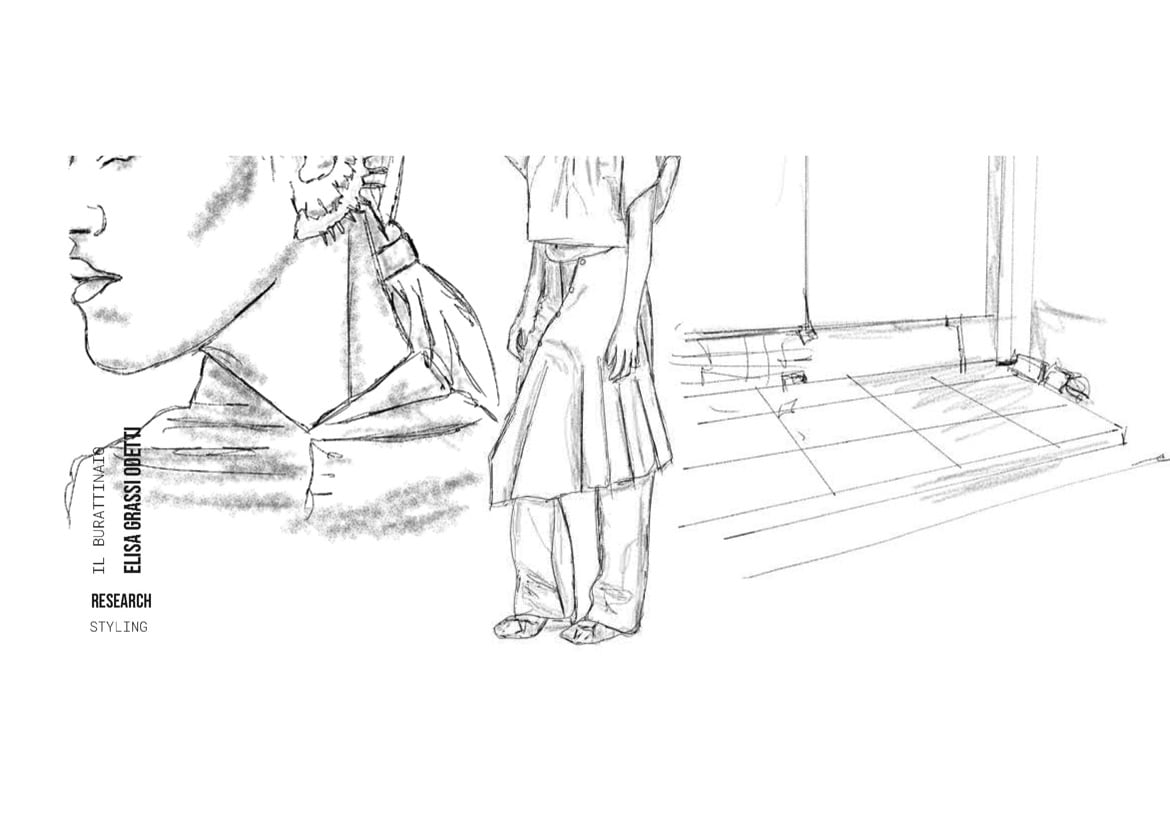La collezione Womenswear si ispira alla teoria della maschera basata sulla smaterializzazione dell’io e frantumazione della coscienza individuale. Il progetto nasce da una serie di fotografie di Alfred Johnston, fotografo storico che ritrae le Ziegfeld Girls, showgirls protagoniste di una serie di spettaccoli teatrali di Broadway negli anni Venti.
La teoria della maschera, come concetto pirandelliano assunto, è il simbolo della mistificazione dell’individuo, del riconoscimento dell’assenza di una verità assoluta che pone l’uomo in una condizione frammentaria nella realtà post moderna.
In questa situazione l’uomo sembra fuggire e ricercare una propria individualità.
La prigionia dell’esistenza definisce tre reazioni comportamentali: la reazione passiva, ironico-umoristica e drammatica.
La seconda introduce l’elemento parodico, attraverso il travestitismo e il mascheramento rivelando la coscienza umana che freme sotto la maschera.
Il sogno, la disillusione e infine la realtà scandiscono la collezione secondo tre atti.
Il primo atto, “il sogno”, è rappresentato attraverso la scena teatrale e i costumi delle Ziegfeld Follies.
Il tema centrale è la sublimazione dell’erotismo del corpo femminile, il quale dialoga tra la volontà di esibizonismo e il mascheramento.
Il secondo atto sfrutta l’elemento parodico, reinterpentando il travestitismo delle sottoculture giovanili newyorkesi negli anni Ottanta.
L’atteggiamento dissacratorio e i costumi irriverenti costituivano la traduzione di una satira, non per vestirsi ma per deridere le persone, che lo facevano.
Il mondo dei Kids vibrante e creativo non si sottrae all’epiteto decadente, anzi l’oscurità e l’ambiguità, l’ossessione per l’evasione, rivelano un’estetica esplosiva, di imprigionamento e di pazzia.
Il portfolio è presentato attraverso una prima parte di “ricerca”, con immagini e schizzi, studio delle forme; la seconda parte di “sviluppo”, collezione,disegni tecnici, studio e tele dei modelli.
The Women’s Wear collection draws inspiration from the theory of the mask based on the dematerialization of the self and the fragmentation of individual consciousness. The project originates from a series of photographs by Alfred Johnston, a historic photographer who captured the Ziegfeld Girls, showgirls featured in a series of Broadway theatrical productions in the 1920s.
The theory of the mask, as a Pirandellian concept, symbolizes the mystification of the individual, the recognition of the absence of an absolute truth that places humanity in a fragmented condition in the post-modern reality.
In this situation, humans seem to flee and seek their own individuality.
The captivity of existence defines three behavioral reactions: the passive reaction, the ironic-humorous reaction, and the dramatic reaction. The second introduces the parodic element through cross-dressing and masking, revealing the human consciousness that
seethes beneath the mask.
Dream, disillusionment, and finally, reality mark the collection in three acts.The first act, “the dream,” is represented through theatrical scenes and the costumes of the Ziegfeld Follies. The central theme is the sublimation of the eroticism of the female body, which oscillates between the desire for exhibitionism and masking.
The second act employs the parodic element, reinterpreting the cross-dressing of New York youth subcultures in the 1980s. The irreverent attitude and costumes constituted a satire, not for the purpose of dressing up, but to mock those who did.
The vibrant and creative world of the Kids does not shy away from the decadent epithet; instead, darkness and ambiguity, the obsession with escapism, reveal an explosive aesthetic of confinement and madness.
The portfolio is presented in two parts: the first part is “research,” with images and sketches, a study of forms; the second part is “development,” featuring the collection, technical drawings, the study and canvases of the models.
